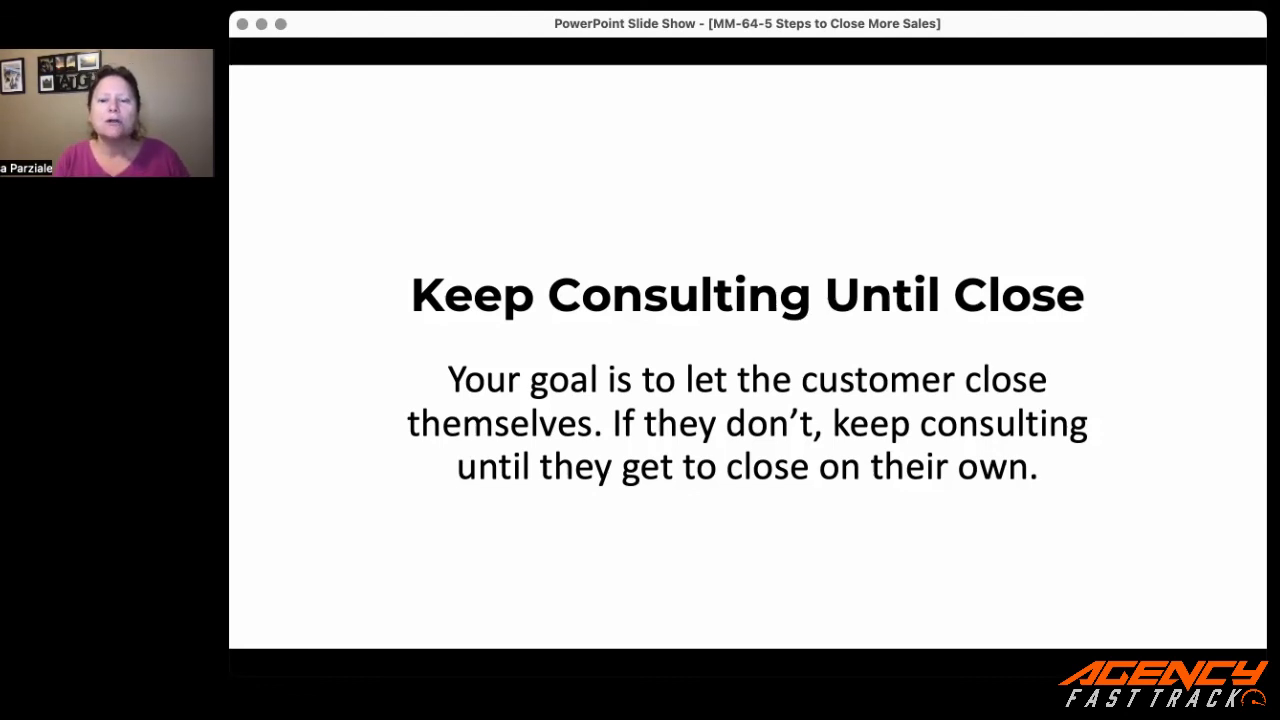Introduction to Closing More Sales
Today, we’re going to explore five essential steps to help you close more sales effectively. This guide is designed to equip you with practical skills that can transform a potential “no” into a “yes.” Sponsored by Agency Fast Track, we encourage you to visit our website at www.agencyfasttrack.com for more resources.
In the spirit of today’s topic, consider this insightful quote by Jim Cathcart:
“Become the person who would attract the results you seek.”
Our focus is on becoming the kind of person that prospective customers are eager to say “yes” to and engage with.

Building Rapport
People buy from people they like and feel comfortable with.
Building rapport is a fundamental aspect of successful sales. It is one of the most significant keys to increasing your close ratio. Establishing rapport should begin from the very first contact with a potential customer, whether through a phone call, email, or any other form of communication.
The process of building rapport involves creating a connection that makes the customer feel comfortable and valued. This connection should be maintained throughout the entire sales process, from the initial interaction to the closing of the sale.
To effectively build rapport, focus on understanding the customer’s needs and preferences, and ensure that every interaction is genuine and personable. By doing so, you increase the likelihood of turning a potential “no” into a “yes,” thereby enhancing your sales closing ratio.

Step 1: Match and Mirror
People like people that are just like them.
In the journey to closing more sales, the first step is to effectively match and mirror your potential customers. This technique involves aligning your behavior with that of your customer to create a sense of familiarity and comfort.
Matching Voice
Begin by matching the tone and volume of your speech to that of your customer. If they are loud, happy, and excited, reflect that energy in your own voice. Conversely, if they are soft-spoken and reserved, adjust your tone to be more subdued. This alignment in communication style helps set a positive tone for the interaction.
Mirroring Body Language
Observe and replicate the body language of your customer. If they are reserved, with closed-off body language, mirror that by being more contained in your gestures. If they are open and expressive, allow your body language to reflect that openness. This mirroring can create a subconscious connection, making the customer feel more at ease.
Matching Energy
Finally, match the overall energy level of your customer. High-energy customers will appreciate a similar level of enthusiasm, while low-key customers will feel more comfortable with a calmer demeanor. Adjusting your energy to match theirs demonstrates empathy and understanding.
By mastering the art of matching and mirroring, you can make your customers feel understood and comfortable, ultimately increasing your chances of closing the sale.
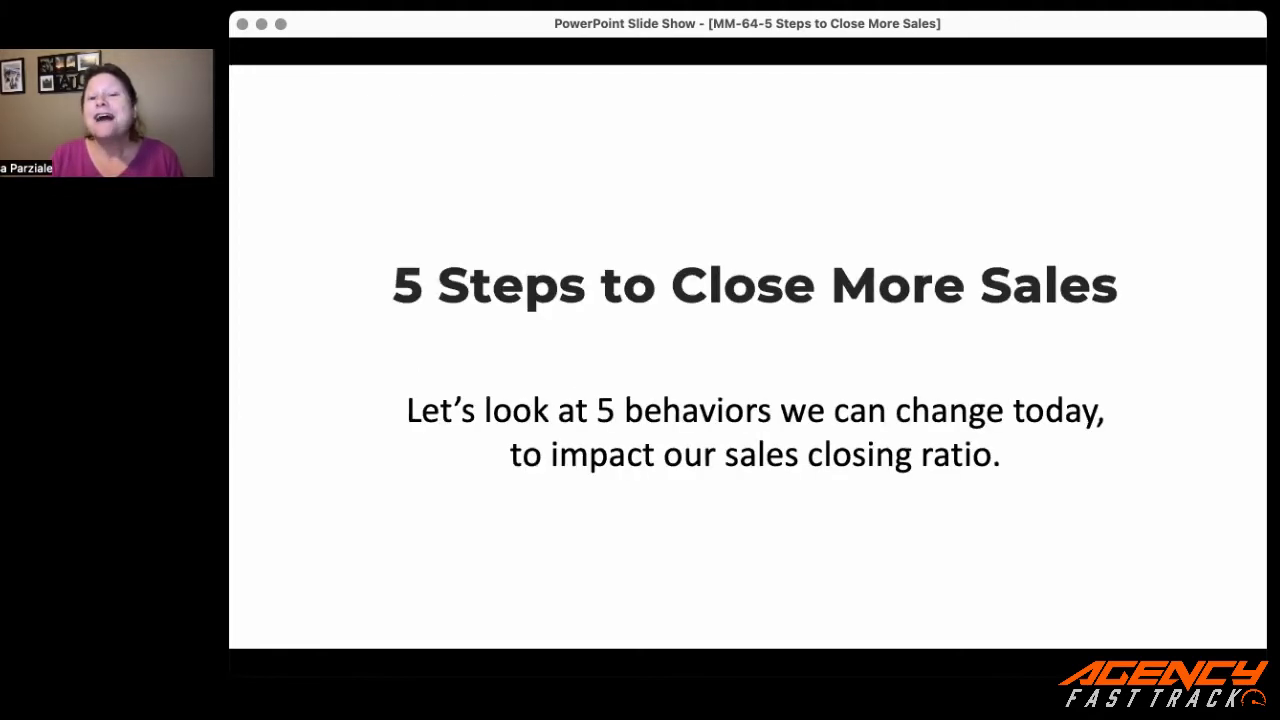
Step 2: Focus on the Customer
Everyone is fundamentally selfish.
In this step, the emphasis is on focusing entirely on the customer. It’s crucial to remember that customers are primarily interested in what benefits them. Therefore, the conversation should revolve around their results, goals, and success, rather than your own.
Techniques to Keep the Conversation Centered on the Customer
-
Limit Personal Sharing: While it’s important to build rapport, avoid lengthy discussions about your own experiences. For instance, if a customer mentions they enjoy fishing, you might briefly acknowledge your shared interest but quickly steer the conversation back to them.
-
Ask Open-Ended Questions: Use questions like “What do you mean by that?” to encourage customers to elaborate on their needs, challenges, and desires. This approach helps gather valuable information about their situation.
-
Seek Their ‘Why’: Understanding the deeper reasons behind a customer’s goals is essential. Knowing their motivations, such as avoiding significant personal losses, allows you to tailor your solutions to their specific needs.
Importance of Understanding the Customer’s ‘Why’
Delving into the customer’s underlying motivations makes the interaction more personal and meaningful. By understanding their ‘why,’ you can better position yourself to address their concerns and demonstrate how your offerings can solve their problems.
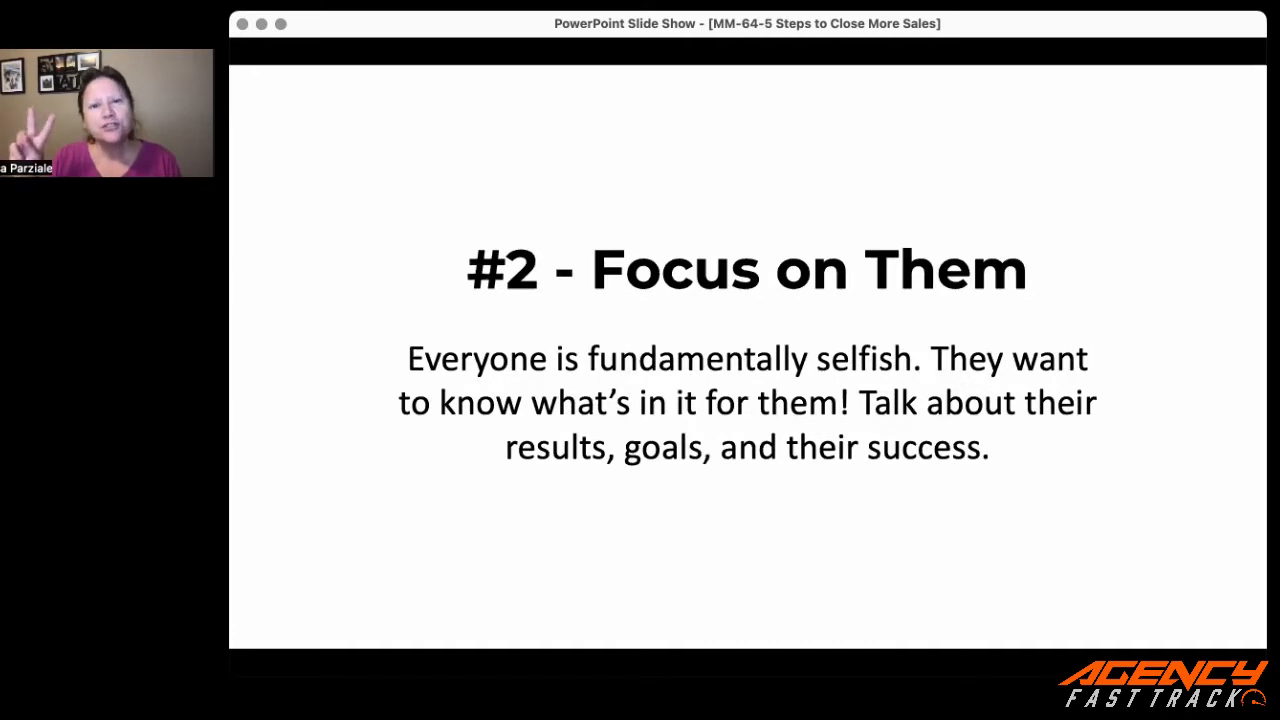
Step 3: Set Yourself Apart
In the journey to close more sales, Step 3 is crucial: Set Yourself Apart. The key is to avoid doing what your future customer expects. Instead, differentiate yourself from other salespeople.
Don’t be that normal salesperson.
How to Set Yourself Apart
-
Avoid Traditional Sales Tactics: Refrain from talking about yourself, your products, or your services. This is not about selling; it’s about understanding.
-
Focus on the Customer’s Problems: Initiate conversations centered around the customer’s true issues. The goal is to understand their needs deeply before discussing any solutions.
-
Adopt a Consulting Approach: Act as a consultant rather than a salesperson. Gain clarity on the customer’s situation by asking insightful questions. This approach not only provides value but also builds trust.
-
Provide Value Through Understanding: By focusing on consulting and problem-solving, you offer immediate value. This involves listening actively and asking clarifying questions to truly understand the customer’s challenges.
By investing your time and attention in understanding the customer, you distinguish yourself from others. This approach not only sets you apart but also increases your chances of closing the sale.
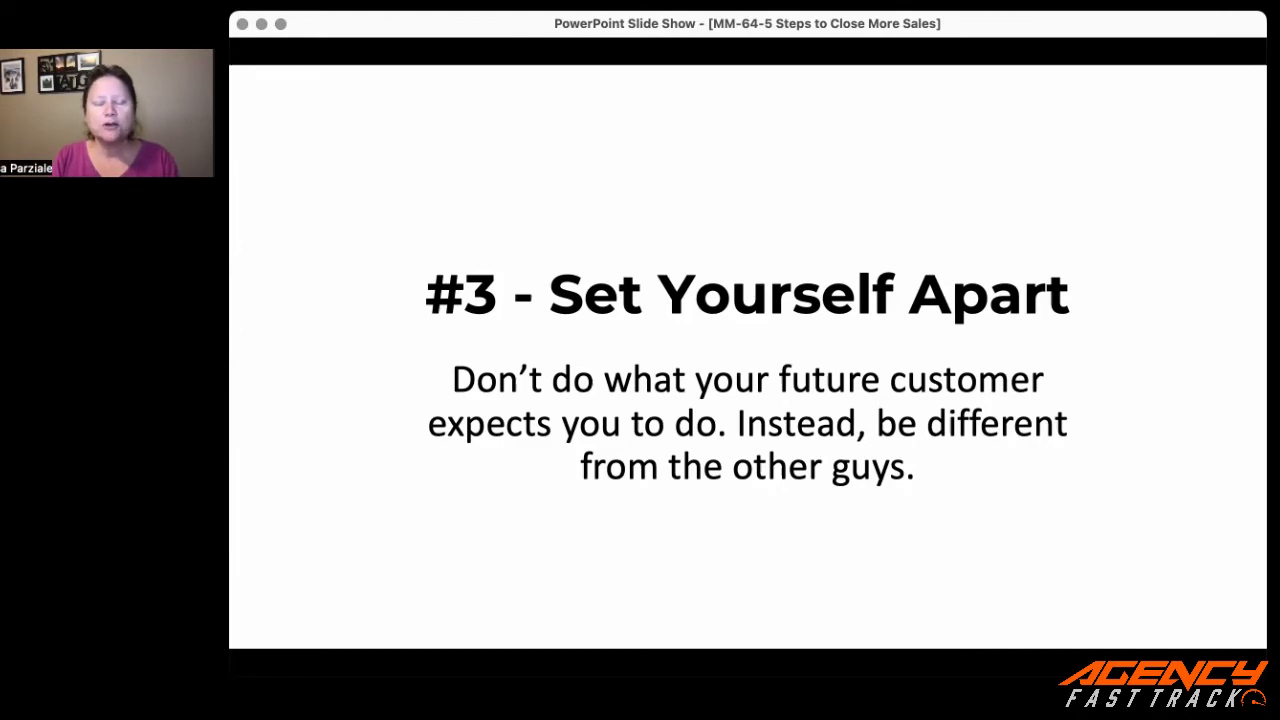
Step 4: Rephrase and Clarify
Rephrasing and clarifying customer statements is a crucial step in the sales process. It ensures that the customer knows you are actively listening and provides an opportunity to confirm your understanding. This technique is one of the most effective ways to close more sales.
“Just so I understand.”
Importance of Rephrasing and Clarifying
Rephrasing what the customer says demonstrates that you have heard and acknowledged their concerns. It also allows the customer to correct any misunderstandings, ensuring that both parties are on the same page. This builds trust and shows genuine concern for the customer’s needs.
Techniques for Effective Rephrasing
- Use Clarifying Phrases: Start with phrases like “Just so I understand” to show genuine interest and concern.
- Confirm Understanding: After rephrasing, ask questions like “Did I understand that correctly?” to confirm your understanding.
- Probe for More Information: Use questions such as “What do you mean by that?” or “Can you explain more?” to delve deeper into the customer’s needs.
Building Trust Through Clarification
By consistently rephrasing and clarifying, you demonstrate active listening and a commitment to understanding the customer’s perspective. This approach not only helps in resolving any potential misunderstandings but also strengthens the relationship with the customer.
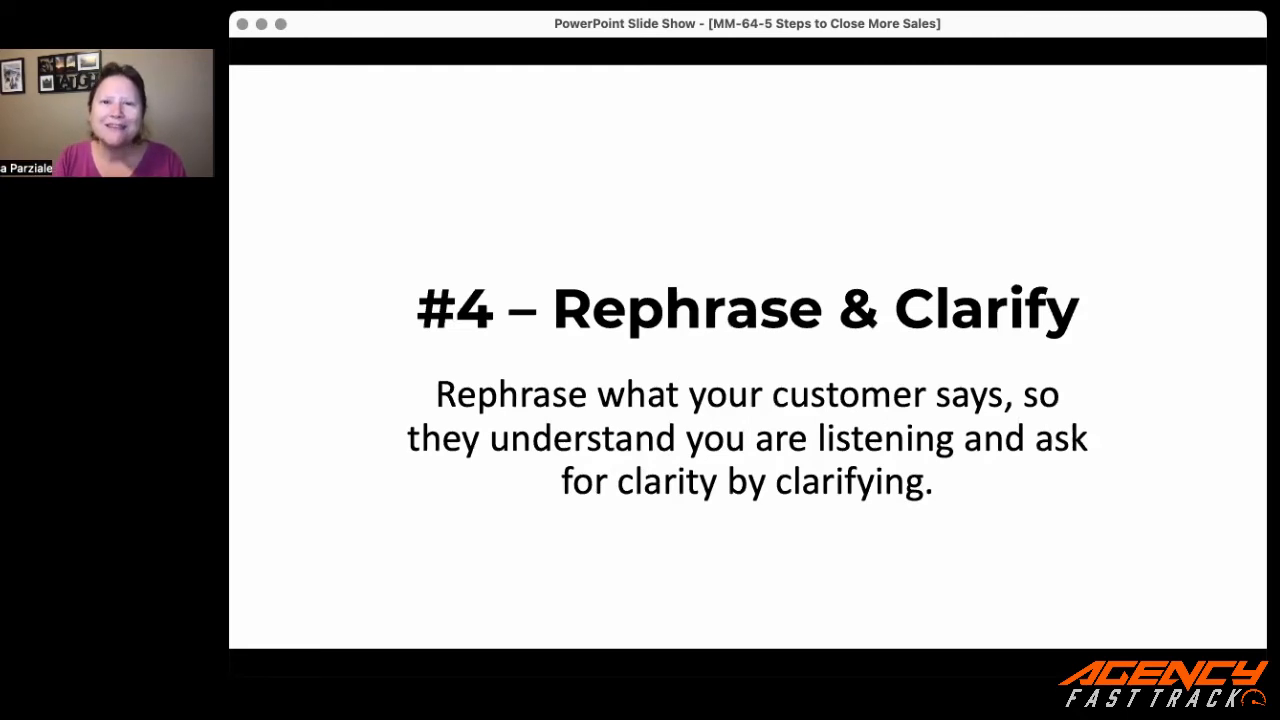
Step 5: Encourage the Self Close
In this step, the focus is on allowing the customer to close the sale themselves by creating safe transitions. This involves listening and observing for key closing language and signs, whether in person or through virtual meetings.
“What’s the next step?”
Recognizing Closing Signals
Customers often indicate their readiness to proceed with subtle cues. Phrases like “What’s the next step?” or “This sounds good” suggest they are open to moving forward. It’s crucial to pay attention to these signals, as customers rarely express their willingness to buy directly.
Techniques to Encourage the Self Close
-
Listen for Language and Body Cues: Observe changes in body language, such as a shift from closed to open posture, which may indicate increased comfort.
-
Avoid Hard Close Tactics: Do not push for a close unless the customer shows readiness. If necessary, take a break and revisit the conversation later.
-
Seed the Close: If the customer does not show clear signs of readiness, use clarifying questions to gently guide them. For example, “You mentioned wanting to solve this issue. Is this something you’d like to address now?”
-
Consult Until Close: Continue to provide value and consult with the customer until they are ready to close. If they do not respond to seeding, maintain the dialogue and support their decision-making process.
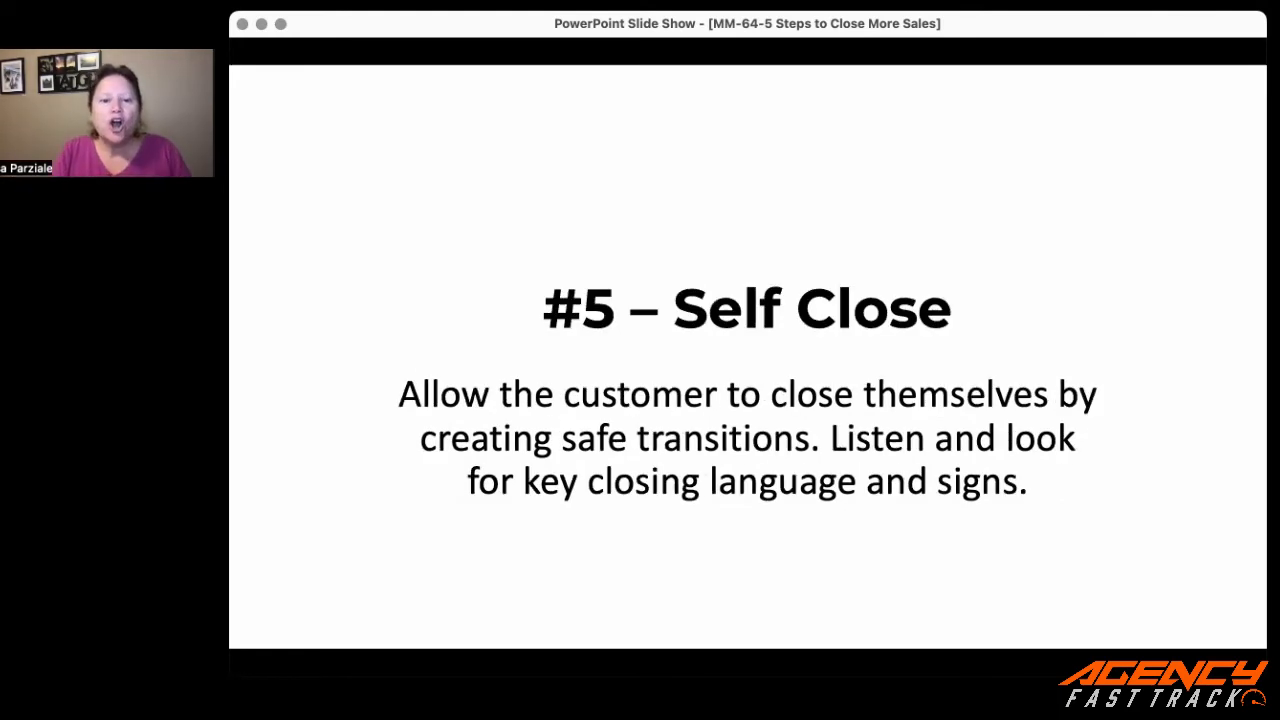
Conclusion and Recap
In conclusion, the key to closing more sales lies in a strategic approach that involves continuous consulting until the customer is ready to close on their own. This might involve setting up follow-up meetings or providing additional proof to support your offering. The essence is to remain engaged throughout the process, ensuring that your sales pipeline is consistently filled and effectively managed.
“Follow these five steps to close more sales.”
To recap, the five essential steps to closing more sales are:
- Match and Mirror: Align your behavior with that of your potential customers.
- Focus on the Customer: Prioritize their needs and concerns.
- Set Yourself Apart: Differentiate yourself from competitors.
- Rephrase and Clarify: Ensure clear communication.
- Encourage the Self Close: Facilitate the customer’s decision-making process.
Implementing these strategies can significantly enhance your ability to win new customers and close more deals.
For those eager to achieve their best year ever, we invite you to participate in our free training course. Simply type “best year ever” in the comments or visit agencyfasttrack.com to connect with us through the chat widget. This training is designed to set you on the path to building a successful and sustainable business.
